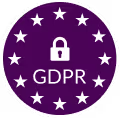DEIB
DEIB stands for diversity, equity, inclusion, and belonging. The concept is the latest iteration of the term “DEI,” as companies understand the growing importance of an employee’s need to feel that they belong. This evolution also reflects how businesses are making hiring choices more and more based on the tenets of social responsibility.
What is DEIB?
DEIB is centered on the idea that certain types of employees are disadvantaged in the workplace due to unfair bias. DEIB outlines how organizations need to counter this problem by developing a workplace structure that focuses on these four concepts:
1. Diversity
Diversity is all about the backgrounds of your employees. Every employee fits a certain demographic, based on (but not exclusive to):
- Ethnicity
- Gender identity
- Sexual orientation
- Age
- Religion
- Birthplace
- Nationality
- Physical ability
- Economic status
Diversity in the workplace means that you have a healthy mix of employees from among these backgrounds. However, this is only a starting point, because how they are treated within the organization is just as essential.
2. Equity
An equitable workplace is one where each employee in a diverse workforce is set up equally for success. This is different from equality, which states that employees all get the same resources to enable success. For example, in an equal organization, each employee receives X hours of computer training. But what about employees who didn’t quite catch on within those limits? The principle of equity states that they would be given additional hours of instruction until they are up to par.
3. Inclusion
It might be great to have skilled and diverse teams, but that still does not ensure equal participation. In an inclusive environment, employees are able to express their point of view without fear. In addition, they receive constructive feedback and due consideration of their opinions.
4. Belonging
To be inclusive is not enough if the employee still feels that they do not belong. It’s up to the whole team to make sure that an employee feels that sense of belonging. This can range from close talks with HR staffers to a senior manager giving the spotlight to a new employee so they can introduce themselves and discuss some of their ideas. Sound familiar? The idea of belonging originates with Maslow’s Hierarchy of Needs and is essential for self-actualization.
Why is DEIB Important?
According to the Harvard Business Review, “DEI is Under Attack”. Many of the gains made by HR and DEI professionals are at risk. So it’s never been more important to drive home the DEIB message in your company, and that starts by understanding the rich advantages that it provides.
When an organization implements a DEIB initiative, it benefits in many ways. These range from business goals such as financial profit, all the way to emotional satisfaction, such as increased contributions to society. However, the greatest advantage of DEIB is that employees and candidates enjoy it.
DEIB has existed for enough time so that companies can assess its long-term impact. Over the years, McKinsey has surveyed varying types of DEIB efforts and how they relate to business performance. The consulting firm reports that DEIB programs consistently show an increasing likelihood of benefits. For example, in comparison to companies with average financial performance:
- Those with high levels of gender diversity outperform by 18%
- Those with high levels of ethnic diversity outperform by 27%
- Those with high levels of both gender and ethnic diversity outperform by 9%
The last statistic is interesting because it shows a drop when the two factors are combined. But this is offset by what happens when a company has low levels of both gender and ethnic diversity – its likelihood of average financial performance drops by 66%.
Now let’s look at other kinds of benefits.
Performance
The plusses of a successful DEIB program read like an HR/L&D shopping list. By employing people with different backgrounds, your teams will see challenges from new perspectives. This can produce improved levels of creativity and innovation. Similarly, because approaches to problem-solving and decision-making vary across cultures, organizations will learn new ways of planning and forming strategy. They will also develop a greater sensitivity towards biases that can affect everything from hiring processes to product design. This is an even stronger statement for multinational companies, where local issues are more apparent to employees from local cultures.
Moreover, companies that maximize “belonging” can enjoy higher levels of employee engagement and employee retention. Belonging can be thought of as the most advanced stage of connection to a company’s ideals and people. This results in greater loyalty and interest in the organization’s health so that you can count on more collaboration and teamwork.
Overall, organizations that remove performance barriers can finally achieve a growth mindset. By freeing employees from poor treatment due to prejudice, they will reach their full potential to the benefit of themselves and the entire company.
Stakeholder Relations
As mentioned below, DEI programs are sometimes compulsory according to investor agreements. But even when there is no legal pressure on a company to conform, having a DEIB initiative significantly reduces risk. Nowadays, due to factors like social media and greater awareness of social issues, companies that violate DEI principles can expect a backlash from employees, customers, and the community. In some situations, this leads to lawsuits, damage to brand equity, and lower demand for products.
Modern organizations have also expanded their definition of “stakeholders” to include the communities where they operate and sometimes the world as a whole. For such companies, working towards universal social justice goals is important for employee morale and for meeting commitments that are included in a mission statement.
Branding
When your front-line employees are diverse, they have better connections with customers. This pays significant dividends. For instance, workers from various age groups or genders might have unique information about customer preferences and market trends. When dealing with clients, a diverse organization will have more of an ability to understand the challenges that certain customer groups have with a product or service. Similarly, it stands to reason that customers will enjoy dealing with reps from their social group, which can foster brand loyalty and lead to word-of-mouth promotion.
Recruiting
Job seekers prefer working at companies that initiate DEIB concepts. Younger generations in particular demand actions that promote diversity. Not to mention, social media and job websites will expose companies that don’t live up to expectations. If a certain company is graded poorly for diversity on Indeed.com, for example, potential workers will avoid it. Finally, recruiting from a pool of diverse candidates is important for employee satisfaction because it shows that the organization is serious about DEIB.
The Basics of DEIB Programs
The long list of benefits coming from diverse employees and their proper treatment in a DEIB workplace does not happen overnight or with a half-hearted approach. To achieve such extensive advantages, organizations of all sizes “must focus on inclusion and diversity”. A thorough set of DEIB practices that incorporate new frameworks, stakeholder expectations, policies, and L&D programs should be mapped out and implemented. Here are the highlights of an effective diversity program.
Frameworks
DEIB organizations need to build what amounts to a new administrative structure. This includes:
- Audits – what is your company trying to achieve? Objectives like 50-50 gender equality can be relatively easy to set. But what about all the other diversity categories that might exist in a company? To get started, a diversity audit lets you know where you stand. These can be performed internally, but there are many DEI experts out there to lend a hand.
- Goals – once you have a clear idea of where your organization lacks diversity, it’s time to set goals. One great tool for accomplishing this is a mission statement. Many companies had these even before DEIB became a widespread workplace issue, so it might be time to update yours. Based on the mission statement, you can compose a set of concrete goals to fill the gaps indicated by the diversity audit. Don’t forget to set timelines and dates for progress reviews.
- Metrics – The tools used for many HR activities, such as pulse surveys, feedback sessions, and focus groups, can be adapted to measure the effectiveness of DEIB programs towards meeting its goals. Periodic diversity audits are also essential.
Stakeholders
Employees at all levels, and particularly HR teams, should have their roles and responsibilities in a DEIB program mapped out. At the very least, you should identify the managers who will be responsible for ensuring the implementation of DEIB initiatives. Don’t forget to include local communities and the board of directors as well. The latter must also be examined in terms of diversity, equality of power, election procedures, etc.
Policies
HR teams should lead the formation of DEIB policies as a way to explain requirements, formalize goals, and set standards. This is often done in cooperation with the legal department, especially when your company operates according to equal pay laws, needs to meet DEI demands from investors, or must submit forms like those for equal opportunity reporting.
Among the policies that you should formalize are:
- Non-discrimination and anti-harassment
- Equity and fairness related to performance evaluation, compensation, career advancement, and removing your company’s barriers to equity
- Inclusive recruiting and hiring, including a commitment to blind recruitment practices
- Accommodation for disabilities that include the physical environment and those employees with mental/emotional issues
- Active steps to promote DEIB such as internal sourcing campaigns and employee retention programs aimed at increasing diversity
Learning and Development
A final and vital issue at the core of many DEIB strategies is a lack of workplace skills. This occurs due to:
A Lack of Opportunities for Disadvantaged Populations
Many DEIB populations in companies have not been given access to the different skills that would allow them to progress. This is not necessarily the fault or intention of a specific person or group. Instead, systemic bias and unconscious racism can allow such things to happen without people of privilege noticing. Moreover, it’s possible that certain groups have not had the opportunities that the rest of us have enjoyed, even before arriving at the organization.
A Failure to Re-Educate Advantaged Populations
Some employees simply don’t have the skills to appreciate and/or be an effective part of DEIB programs. You might have a company that has diverse talent in the professional sense, but it lacks vital interpersonal skills, and this results in bias and other behaviors that are counter to the spirit of DEI.
In both cases, L&D programs can provide the answer. As part of standard talent development initiatives, DEIB training should take these three forms:
Equitable Opportunities
For disadvantaged groups, it’s time to correct the wrongs of the past. DEIB populations should be given priority when it comes to L&D. Through common programs like career management and skills gap analyses, HR should discover where disadvantaged employees want to go, and what skills will get them there. Note that, the sooner these workers complete the program, the faster the effect of DEIB will be felt in the company. This makes it not just of moral importance, but a business goal as well.
Upskilling for Understanding
Perhaps the most important skill for enabling DEIB among a company’s privileged employees is empathy. It’s also consistently voted as one of the most important abilities for workers in general, and was even declared the top leadership skill by Forbes. Someone who is empathetic by definition can see a situation from the viewpoint of others. In the case of DEIB populations, this means recognition and understanding by privileged workers of the barriers faced by their less fortunate peers, which is the first vital step towards inclusion. In addition, HR departments can ensure more acceptance of DEIB concepts through training in:
Company-Wide Participation
Organizations are never perfect DEIB followers. As discussed below, the main objective in light of this is cultural change. In terms of more modest goals, ongoing training for DEI-focused L&D should be implemented. This will ensure that new employees are enculturated properly, while deep-seated biases are minimized among veteran workers.
Another activity should be education in DEIB terminology. This is about common phrases specific to DEI concepts (for example, “ally”, “BAME”, and “Intersectionality”) as well as the words that should not be used in the workplace, even during interpersonal conversations.
Examples of DEIB Strategy
Major corporations everywhere engage in obtaining significant DEIB goals. Here are just a few examples:
- Uber maintains a wide selection of employee resource groups (ERGs) based on sexuality, ethnicity, age, religion, and other qualities. It also files an EEO-1 report which represents detailed commitments to DEIB initiatives.
- Slack has a considerable number of DEIB programs underway, such as Rising Tides and partnerships with both The Next Chapter and The Last Mile. It also sponsors numerous ERGs.
- Indeed is a web-based employment agency that has shown commitment to DEIB through efforts like promoting a global office for diversity, inclusion, and belonging, as well as many ERGs. Indeed reports DEIB statistics directly on its website also hires from sources that are specific to certain DEIB groups such as DisabilityIN and Afro Tech.
DEIB Best Practices
DEIB training programs rely heavily, but not exclusively, on the human resources department. For HR employees, DEIB means:
Hiring and retention practices that prioritize DEIB
The formal policies described above that help the disadvantaged are a step in the right direction. But true diversity means that we need to be hyper-alert to our own prejudices, no matter how far the organization progresses towards its goals. Due to challenges such as unconscious bias and institutional racism, HR professionals need to develop awareness of how they implement hiring objectives, taking special care to avoid racially based favoritism. Similarly, due to bias in the workplace, HR must make sure that employees in DEIB groups feel safe, which is an important factor in retention rates.
Revising tools and processes
It’s a common practice for HR teams to analyze trends regarding engagement, turnover, and satisfaction. But DEIB adds another dimension. When examining the status of HR issues, it’s important to pay attention to who is experiencing what. For instance, is engagement increasing for all employee groups or just the advantaged ones? If any differences pop out, it is time to investigate the root causes.
Training all levels of the organization in workplace DEIB practices and concepts
You can’t have L&D programs all day, every day. But the lessons that we learn from them must constantly be top of mind. The ability to implement successful DEIB training requires employees to understand its concepts and to keep them in mind on a daily basis. This awareness also depends on the organizational hierarchy. For example, a production worker must learn to treat coworkers from DEIB groups in a respectful manner, while managers also need to keep personal biases in mind when making hiring, promotion, and salary decisions. It’s up to HR to teach and monitor employees so that they conform to DEIB standards at their particular hierarchical level.
Culture and DEIB
It’s this last point that leads into a discussion of what might be the most important aspect of a DEIB workplace – culture. Organizational culture can be described as the “aura” or “vibe” that every company has, good or bad. It provides a set of often-unspoken rules that employees follow at all times.
When it comes to DEIB, a healthy organizational culture gives employees a mindset that naturally accommodates a diverse population of workers without them needing constant reminders and training. But getting to this point requires a lot of intense work and leadership. Moreover, because HR is the cornerstone of organizational culture, its role is to promote excellence in DEIB. HR teams should consider the following activities:
Connecting People and Policies
HR should ensure that direct managers play an essential role in promoting DEIB. As mentioned, they are vital stakeholders for implementing DEI concepts. But HR should encourage them to do even more. They can help employees to understand how the activities of individuals and departments contribute to diversity goals. Managers are also a major part of helping employees feel like they belong and in monitoring behavior that might interfere with this.
Recognizing Employees
As with many other workplace initiatives, some employees will show an outstanding commitment to it. Recognizing such workers serves to promote their participation and highlight important DEIB issues. Recognition methods include public mention, financial rewards, and non-monetary perks.
Establishing Cultural Competence
The ultimate level of DEIB achievement in the workplace and in society is cultural competence (also known as “cross-cultural competence” or “3C”). This is an ability to connect with people from any number of cultures. Cultural competence is a distinct skill that allows a person to interact with others regardless of their background. It depends on a high level of awareness about your own ideas and actions that might be considered offensive. Employees with cultural competence have the experience and insight that tell them instinctively when they or others are not being respectful of the viewpoints and needs of minority groups.
Developing this skill actually starts with a critical examination of one’s own culture and opinions. It serves to let us understand how our ideas about others are subjective and often have a negative bias. With this in mind, we are in a better position to see how our reactions to minorities can stem from culture and should instead be based on empathy.
Cultural competence is more than a DEIB goal. Employees who can master it tend to score highly for other positive personality traits such as conscientiousness, agreeableness, openness, and emotional stability.
Growthspace Powers DEIB Initiatives
DEIB is a complex undertaking that requires significant knowledge just to implement it. In addition, many DEIB concepts need to be exercised by various levels of employees, from senior managers to line workers. Personalized DEI training powered by Growthspace, which teaches employees about the thoughts and actions behind valuable social and organizational programs, is at the heart of any effective DEIB effort and inclusive workplace culture.














